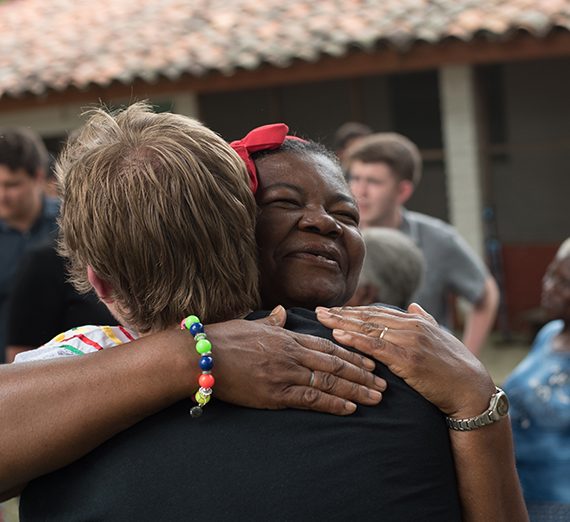Singing in Translation - An Experience in Colombia

We talk about immersion and cultural exchanges and studies abroad. These describe only a portion of all that is global engagement.
A year or so ago I heard the Gonzaga choir sing a Swahili song at the end of a concert. “Kanisa litajengwa” was written in Rwanda as a response to years of violence and despair. It is infectious, even to the most stoic listeners. Sitting quietly in our seats, we couldn’t help but move along as the drums began. It wasn’t the first time I’d enjoyed a choral concert, but it was the first time I left one humming a song in my head.
They emptied from the bus and spilled into the parking lot, a choral army. Not a parking lot as much as a vacant space between buildings, not an army as much as a gaggle of fresh-faced co-eds, blanched from the rapid temperature change between the womb of the air-conditioned bus and the concrete slab where they were standing.
They marched in matching black polo shirts, stitched with Gonzaga choir logos on the pocket. Eyes were straight as they followed the two local teachers through the dirt alley and past the gate topped with razor wire. Inside, a few hundred students gathered in matching blue and white uniforms, peeking from classroom doors around one another into the hallway to check out the visitors.
This was Desepaz, a neighborhood on the outskirts of Cali, Colombia. Desepaz stands for Desarrollo, Seguridad y Paz, or Development, Security, Peace – a neighborhood in rebirth. You could glimpse its history by driving down one of its streets – paved in a constantly settling dust. The community seemed to be living outside their homes – couples conversing on balconies, neighbors gathering around a colorful rolling cart of Raspados (Colombian shaved ice topped with cream), children chasing chickens into alleyways. The streets were alive with sound, and the Gonzaga choir hadn’t been as quiet all week.
In 1992, Cali had been named one of the most violent cities in the world, plagued by high rates of youth violence, domestic violence and child abuse. Desepaz was born of the idea that the only way to overcome these problems was to transform the culture by turning violence into music.
They had been warned about this neighborhood, not from parents or friends back home but from the guides – the locals who have called Cali their home since they were children. “Hold your bags close and look straight ahead. Don’t talk to anyone.”
The precautions appeared intense in what seemed like a friendly neighborhood where kids played in the middle of the street and mothers walked with their children. But it was a safeguard that those who lived through 30 years of government upheaval, guerrilla and paramilitary fighting and drug cartels are slow to let go of. A conditioned response that is still being reconditioned.
In the past decade, the government outlawed militia groups and significantly reduced drug operations, and with it came an opportunity.
The Gonzaga choir, headed by Tim Westerhaus, had spent the last week singing across Colombia, on occasion teamed with the Javeriana University Choir from Bogotá or with the community college choir in the European-themed town of Buga. They listened to the local sounds and sang and danced with a group of folk musicians in an open-air home. They didn’t come with a mission to build houses or to feed people, they had come to share the music.
Who Will Build the Church?
Inside the school where the choirs had gathered, both groups were visually nervous and excited as they prepared to teach each other a song.
At first there was little more than a stolen smile between the groups, but after the choirs had warmed their voices together, the students began to talk. English and Spanish were spoken together in broken sentences, still able to hold wonder.
My mother is fond of saying that the church is not the building but the people. Without them there is no church. It is when we come together, wherever that may be, that the church forms. So Who will build the church may not be a question at all.
The church was there in the Desepaz neighborhood like it was in the Rwandan neighborhoods. It is here in the Logan neighborhood like it was on the bus ride home, quiet again. Our bodies were cooled as we watched the city and we could still hear the singing if we pressed our ears to the window and hummed along.
